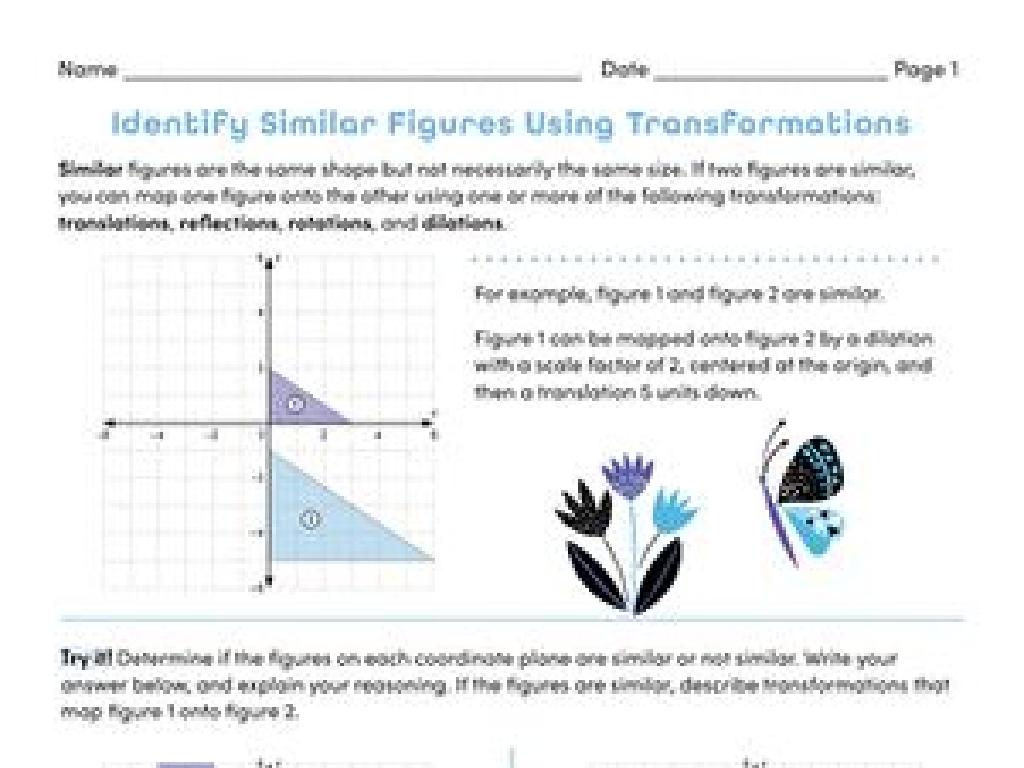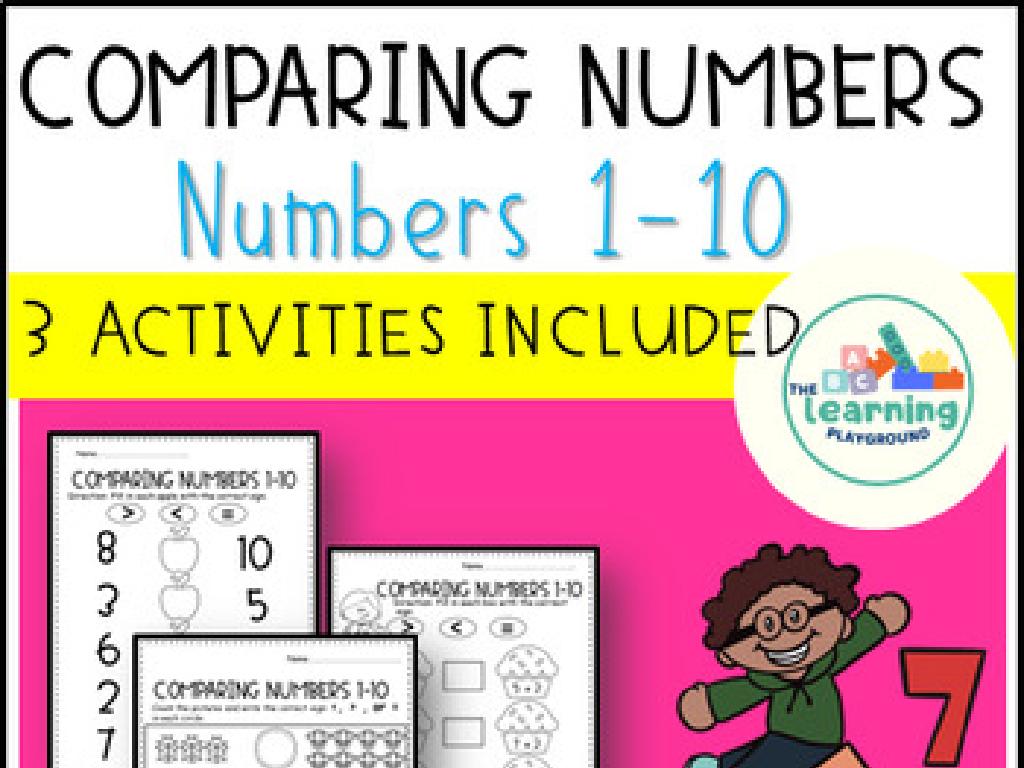Name Countries Of Africa: Region 3
Subject: Social studies
Grade: Eighth grade
Topic: Africa: Geography
Please LOG IN to download the presentation. Access is available to registered users only.
View More Content
Exploring Africa: Region 3 Geography
– Africa’s diverse geography
– Africa is not a country, but a continent with various landforms and climates.
– Geography’s role in development
– Geography influences economic activities, cultures, and development.
– Focus on Region 3 countries
– Region 3 includes countries like Kenya, Tanzania, and Uganda.
– Significance of learning these countries
|
This slide introduces students to the vast and diverse continent of Africa, emphasizing the importance of geography in the development of its nations. Students will explore how mountains, rivers, and other geographical features have shaped the cultures, economies, and histories of African countries. Today’s lesson will focus specifically on Region 3, which encompasses East African countries. Understanding the geography of these countries provides insight into their unique challenges and contributions to the continent as a whole. Encourage students to think about how geography affects their own lives and to be ready to identify and locate Region 3 countries on a map.
Exploring Africa: Region 3
– Review of Africa’s regions
– Characteristics of each region
– Climate, culture, and geography define a region
– Locate Region 3 on the map
– Use a map to find Region 3, often Central Africa
– Discuss Region 3’s features
– Explore the unique aspects of Region 3, such as its rainforests and rivers
|
Begin the presentation by briefly revisiting the different regions of Africa to provide context. Emphasize the diverse characteristics that define each region, such as climate, culture, and geography. When discussing Region 3, which is often considered Central Africa, use a map to help students visually identify where it is located. Highlight the key features of Region 3, including its dense rainforests, major rivers like the Congo, and rich biodiversity. Encourage students to think about how these geographical features might influence the culture and daily life of the people living there. This slide aims to give students a clear understanding of Africa’s regional diversity, with a focus on the unique attributes of Region 3.
Exploring Africa: Region 3 Countries
– List of Region 3 countries
– Examples: Kenya, Rwanda, Uganda
– Capitals of these countries
– Nairobi is Kenya’s heart, Kigali beautifies Rwanda
– Interesting facts about Kenya
– Kenya: Famous for its safaris and the Maasai Mara
– Discovering Rwanda’s capital
– Kigali, cleanest city in Africa, reflects Rwanda’s growth
|
This slide aims to familiarize students with the countries of Africa’s Region 3 and their capitals. Start by listing the countries, such as Kenya, Rwanda, and Uganda, and then match them with their respective capitals, Nairobi and Kigali. Highlight Kenya’s reputation for wildlife safaris and the cultural significance of the Maasai Mara National Reserve. Discuss Rwanda’s capital, Kigali, known for its cleanliness and urban planning, symbolizing the country’s post-conflict transformation. Encourage students to research more about these countries to appreciate the diversity and richness of African geography and culture.
Exploring Region 3 of Africa: Geography’s Impact
– Major landforms of Region 3
– Mountains, valleys, and plains shape the landscape.
– Climate zones within Region 3
– From arid deserts to tropical rainforests, climate varies.
– Geography’s influence on life
– Geography dictates agriculture, settlement, and culture.
– Discussing regional diversity
|
This slide aims to provide an overview of the physical geography of Africa’s Region 3, which includes understanding the major landforms such as mountains and valleys that characterize the landscape. Students should learn about the different climate zones, ranging from dry deserts to lush rainforests, and how these climates can be found within the same region. Emphasize how the geography of an area deeply affects the lives of its inhabitants, influencing their agricultural practices, where they build their homes, and their cultural traditions. Encourage students to think about the diversity within a single geographical region and how that can lead to a variety of lifestyles and cultures within the same area.
Cultural Highlights of Africa: Region 3
– Diversity of languages in Region 3
– Region 3 features a mosaic of languages, including indigenous tongues and colonial languages.
– Traditional practices and ceremonies
– Festivals, music, dance, and storytelling are vital parts of cultural expression.
– Geography shaping the economy
– Agriculture, mining, and tourism thrive due to varied landscapes like savannas and mountains.
– Interactions between communities
|
This slide aims to give students a glimpse into the rich cultural tapestry of Africa’s Region 3. Emphasize the linguistic diversity, which includes not only local dialects but also languages introduced during colonial times. Highlight how cultural practices such as festivals and traditional ceremonies are central to community life. Discuss how the region’s geography, including its natural resources and landscapes, directly influences the economic activities of its inhabitants, such as farming in fertile areas or mining in mineral-rich zones. Encourage students to consider how these economic activities foster interactions between different communities, leading to a dynamic cultural exchange. Provide examples of specific countries within Region 3 to illustrate these points.
Geography’s Impact on Region 3 of Africa
– Geography influencing development
Terrain, climate, and resources shape economic prospects.
– Region 3’s geographical challenges
Issues include desertification, limited water sources, and infrastructure.
– Growth opportunities in Region 3
Rich cultures, natural resources, and strategic locations offer growth.
– Potential for regional cooperation
Collaborative projects can address common challenges and boost trade.
|
This slide aims to explore how geography can both hinder and help the development of countries in Africa’s Region 3. Students should understand that geographical features like deserts and rivers can limit agriculture and transportation, affecting the economy. However, these same features can also create opportunities for tourism and unique agricultural products. Emphasize the importance of cooperation among countries to overcome shared challenges, such as investing in infrastructure or forming trade agreements. Encourage students to think critically about how geography can dictate the destiny of a region and how human ingenuity can turn challenges into opportunities.
Mapping Africa: Region 3 Exploration
– Label countries and capitals on map
– Identify major geographical features
– Look for mountains, rivers, deserts
– Research and present a country fact
– Find an intriguing fact about one country
– Engage in peer discussion
|
This class activity is designed to help students learn about the geography of Africa’s Region 3 through an interactive mapping exercise. Provide each student with a blank map of the region. Their task is to label each country and its capital. They should also highlight major geographical features such as mountains, rivers, and deserts. Additionally, each student will choose one country from Region 3, research an interesting fact about it, and be prepared to present this to the class. Encourage students to discuss their findings with peers for a collaborative learning experience. Possible activities: 1) Pair students to compare maps, 2) Create a classroom map with labels, 3) Have a quiz on capitals, 4) Discuss the importance of geographical features, 5) Share country facts in a round-robin format.
Review: Countries of Africa – Region 3
– Recap Region 3 countries and capitals
– List countries like Nigeria (Abuja), Chad (N’Djamena)
– Discuss geography and impact
– How does geography affect economy and culture?
– Real-world application of knowledge
– Reflect on learning outcomes
– Consider how geographical understanding aids in global awareness
|
This slide aims to consolidate the students’ knowledge of the countries in Africa’s Region 3, their capitals, and the geographical features that characterize the region. Encourage students to think critically about how geography influences various aspects of life in these countries, such as their economies, cultures, and interactions with neighboring regions. Discuss the importance of understanding geography in current events, international relations, and environmental issues. This reflection will help students connect classroom learning to the wider world, fostering a global perspective and a deeper appreciation for the diversity within the African continent.
Homework: Explore Region 3 of Africa
– Select a country from Region 3
– Research its physical geography
– Look into landforms, climate, and natural resources
– Investigate cultural attributes
– Explore languages, traditions, and festivals
– Examine the country’s economy
– Study currency, main industries, and trade
|
Students are tasked with choosing one country from Africa’s Region 3 to research and present. They should explore the physical geography, including landforms, climate, and natural resources, which shape the country’s environment. Cultural aspects such as languages, traditions, and festivals will give insight into the people and their way of life. Economic factors to consider include the country’s currency, main industries, and trade relations. This assignment will help students develop a comprehensive understanding of a specific African country and improve their research and presentation skills. Encourage them to use various sources such as books, reputable websites, and documentaries for their research. In the next class, students will share their findings, providing a diverse view of Region 3’s countries.






